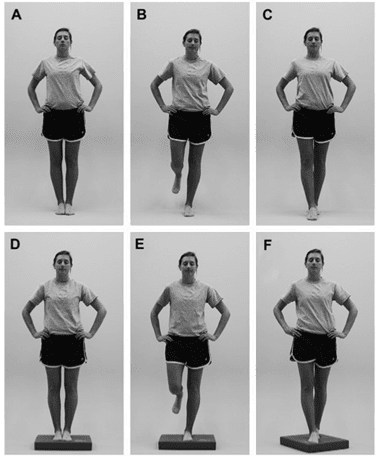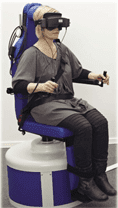If you are unbalanced, dizzy, having trouble walking and seeing, we can find the disconnect and get you back to where you want to be.
In collaboration with world-class scientists and specialist physicians in London, Ontario, we help referred patients get back to doing the things that make life worth living.
Comprehensive testing includes videonystagmography (VNG), rotational chair tests and tests for balance and verticality.
Maintaining balance is controlled by the Vestibular System. It is made up of the ears (including the 3 semicircular canals and the otolithic organs) and the nerves and muscles that control the eyes. Together they are responsible for maintaining balance and position.
A short-circuit in the system caused by an injury to the head and/or neck can cause many symptoms including vertigo, disequilibrium , nausea, vision difficulties, ringing in the ear, difficulty sleeping and headaches, among others.




Head injuries and injuries to the neck (WAD I or II) can lead to disruption of the visual and auditory systems. The Vestibular System is a sensory system that consists of 3 canals of the inner ear plus otoliths (saccule and utricle) connected to the visual system. It is responsible for maintaining a sense of position and balance by providing the brain with information about motion, head position and spatial orientation.
The most common complaint post-concussively is “dizziness”. Dizziness is often used to describe multiple symptoms including vertigo (the illusion of movement), disequilibrium (unsteadiness or imbalance) and lightheadedness (pre-syncope). Symptoms can last for 6 months or more and the cause can be elusive unless all parts of the vestibular system.
Other symptoms include Nystagmus (involuntary movement of the eyes), Motion Sickness and Hearing loss.
Vestibular function testing is invaluable at arriving at a proper diagnosis and ultimately the optimal treatment for affected individuals.
Semicircular Canal System – 3 canals, in orthogonal planes, responsible for coordinating rotational movement.
Otoliths – aka “ear stones” are located in the Vestibule and detect linear acceleration.
Vestibulocochlear Nerve: aka the eighth cranial nerve transmits sound and equilibrium information to the brain.
The information is passed through vestibulospinal system in the spinal cord to maintain posture and balance.

Balance Error Scoring System and Posturography are two tests designed to assess the effects of concussion on static postural stability. The testing consists of 6 tests of standing balance on both a firm and a foam surface.
A final test, Subjective Visual Vertical, consists of looking at a vertical straight line and deciding what is purely vertical and what isn’t. This tests the function of the utricle (one of the two otolith organs) which is responsible for providing a sense of directionality.

Eyes respond to head movement reflexively. If the head moves left the eyes move right automatically to maintain focus on an object. This is known as the Vestibulo-Ocular Reflex (VOR) and can be impaired following a head injury. Generally one eye is found to lag behind the other.
A Suppression Head Impulse Test
The investigator elicits small but unpredictable head movements from the patient to stimulate the VOR. A dysfunction is the result of a semicircular canal injury.
Step Rotation Chair
Patient is seated in a rotating chair in a darkened room. The rotation triggers a nystagmus (rhythmic and involuntary eye movement). The time take to recover is a a measure of the health of the VOR and indicates an issue with either the brain or the inner ear.

The visual and vestibular systems are intimately connected. Specific eye movements are examined to further identify the cause of problems.
Saccadic Testing
Rapid eye movement between two stable positions, such as moving from one word to the next when reading text.
Optokinetic Testing
Allowing the eyes to closely follow a moving object. Injury to the cerebellum will produce a nystagmus.
Smooth Pursuit
Combination of successive Pursuits and Saccades. Assesses the patients ability / inability to move the eyes in a normal manner under a variety of circumstances.
At Back In Balance, we are committed to providing care grounded in the latest research and best practices. To support your understanding and wellness journey, we've curated some resources.
We encourage you to explore these materials to gain deeper insights into the principles that guide our practice.
This study evaluates vestibular function using the video Head Impulse Test (vHIT) in individuals recovering from severe traumatic brain injury. It highlights the importance of assessing the angular vestibulo-ocular reflex (aVOR) to inform rehabilitation strategies.
Developed by the Canadian Society of Otolaryngology – Head & Neck Surgery, this publication outlines five key recommendations to avoid unnecessary tests and treatments in otologic care, promoting high-quality and effective patient management.